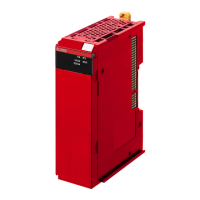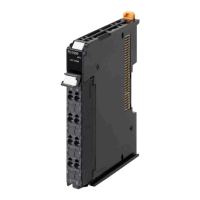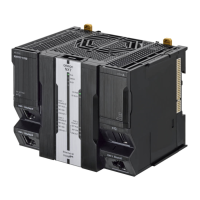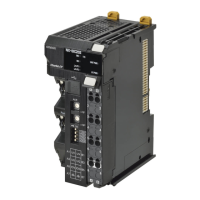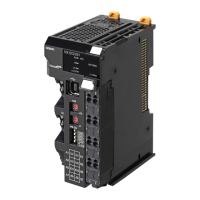Term Description
CPU Rack A Rack to which a CPU Unit or Communication Control Unit is mounted. For NX-series CPU
Units to which NX Units can be connected, a CPU Rack has a CPU Unit with NX Units and
an End Cover mounted to it. For NX-series Communication Control Units, a CPU Rack has a
Communication Control Unit with NX Units and an End Cover mounted to it.
CPU Rack settings Consists of the following items.
• Configuration information
• Unit operation settings
• Unit application data
Slave Terminal settings Consists of the following items.
• Configuration information
• Unit operation settings
• Unit application data
configuration information It consists of the following data:
• Unit configuration information
• I/O allocation information
I/O allocation information The set of information that specifies the I/O data to be processed by I/O refreshing.
On the Sysmac Studio, this is shown as configuration information and includes the Unit con-
figuration information.
Unit configuration information The set of information that specifies the configuration of the NX Units that are connected to
the NX bus master.
On the Sysmac Studio, this is shown as configuration information and includes the I/O allo-
cation information.
safety application data The data that contains the settings that are used to operate the NX-series Safety Control
Units.
It consists of the safety programs, safety task, and variables. You use the Sysmac Studio to
create this data, and then transfer and execute it on the Safety CPU Unit.
On the Sysmac Studio, this data is shown as the slave parameters.
The location where the safety application data is stored on the Safety CPU Unit depends on
whether the safety programs have been validated. (Unvalidated safety programs are stored
in the main memory
, while validated safety programs are stored in the non-volatile memory.)
safety input function A function that evaluates whether the signals that are input on a safety input terminal are
normal or abnormal.
Specific safety evaluation functions include test pulse evaluation and dual channel evalua-
tion.
When the evaluation result shows an abnormality, the safety input data is made inactive
(OFF).
safety output function A function that evaluates whether the values of safety output data and the output signals on
safety output terminals are normal or abnormal.
Specific safety evaluation functions include test pulse evaluation and dual channel evalua-
tion.
When the evaluation result shows an abnormality, the output signal on the safety output ter-
minal is turned OFF
.
dual channel evaluation This function uses a pair of safety input or safety output terminals as redundant terminals
that are checked for consistency to evaluate the status of the safety input or safety output.
single channel The input or output is used as a single point.
dual channels Two inputs or outputs are used as a pair of points for redundancy.
test pulse evaluation This function outputs a test pulse that is used to evaluate a safety input or safety output for
failures or wiring errors with the connected external device.
change tracking A pin is used to manage whether the safety application data has been changed after the fi-
nalized data is created.
Terminology
41
NX-series Safety Control Unit User's Manual (Z930)
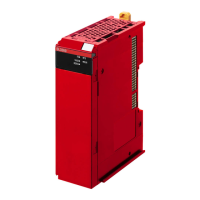
